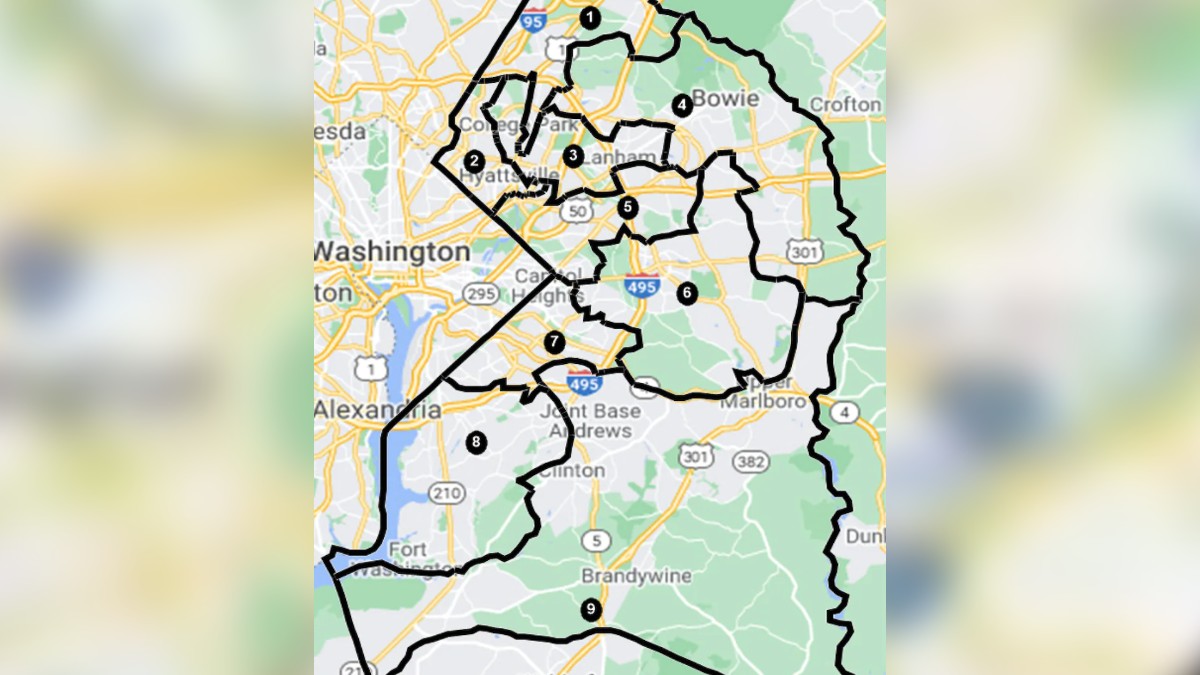The Maryland Court of Appeals is considering whether the Prince George's County Council's redrawn map is legal. The judges heard oral arguments for the controversial case Friday.
Critics accused the council of gerrymandering district lines that drew some council candidates out of the districts they were actively campaigning in –– potentially diminishing their chances of election. Attorneys for and against the council argued whether the legislative body violated voters' rights.
Last year, the county's redistricting commission created a new district map based on census data and population changes. Then, a majority of the county council passed their own map, which led to a number of protests. Some residents sued and won.
"It makes a mockery of the redistricting process," AMP Creeks Council President Kelly Canavan said.
We've got the news you need to know to start your day. Sign up for the First & 4Most morning newsletter — delivered to your inbox daily. >Sign up here.
In February, a Prince George's County judge threw out the map, arguing that the council violated their own law by passing the redrawn map by a resolution instead of a bill.
A resolution not only limited public engagement but usurped the county executive's ability to veto. Before the court of appeals, an attorney for the council argued there wasn't enough time to send the map to the county executive.
The attorney for the complainants fired back.
"This takes away from the citizens, the right to petition their county executive for a veto and that is particularly important here because the council only had six affirmative votes in support of this plan and to override the veto they would have needed eight," said attorney Timothy F. Maloney.
"This is a land of laws so we'll wait and see what the courts decide and we'll go from there," County Executive Angela Alsobrooks said Wednesday.
Two of the candidates who were drawn out of their districts began campaigning again in February. Now, they and the voters who support them are waiting to see what the judges will rule.
It's not clear when the court will make its decision.


